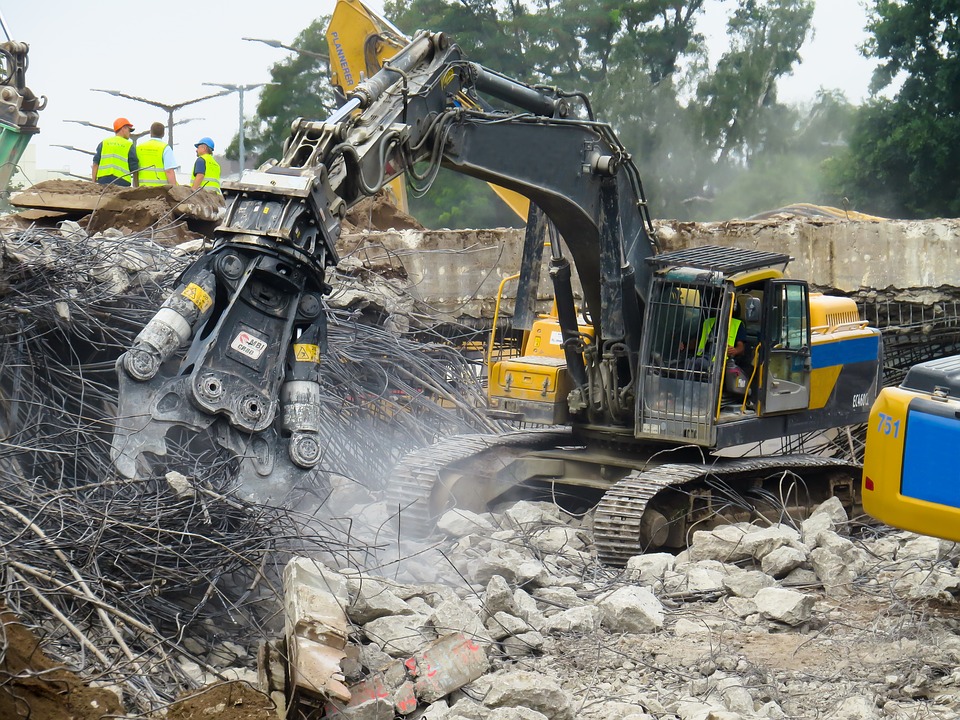
The defining line between renovation or demolition:
Here is a question that is posed to me at least once a month – “Do I renovate my existing home or do I demolish it and start from scratch with a new build?”
There are plenty of reasons to consider demolition. You may be looking to free up land, or perhaps you’re working on a major building refurbishment and need to change the layout.
There is a fine line when you are renovating where you need to know if you’re going to start wasting money fixing a house that is not worth fixing.
If your home is structurally sound, the outer shell of the home has been properly maintained (the roof, the siding/brick and the foundation) and it was properly done at the time of the construction then there is probably no need to demolish it.
Two ways you could demolish a building structure:
1. Explosive Demolition
2. Non-Explosive Demolition
- Sledge hammer
- Excavators and Bulldozers
- Wrecking Balls
- High Reach Excavators
Things You Should Know About Demolition
1. Demolition – So how do you demolish a building or home? Before you take down all or part of a building, you will have to apply to the Building Department for a demolition permit. The process is much the same as for a building permit, but some special situations may affect your application. In a demolition control area, for example, you will not be able to demolish a residential property until you have received a demolition permit issued by the municipal council.
I say the best way to demolish a building is also known as strip-out, this process is very popular right now. As recycling and salvaging of material are very attractive to builders during these days, allowing them to re-use material or recycle it. Selective interior/exterior demolition or recycling of wood, brick, metals and concrete are all recycled for future use in new structures blending the old with the new. This demolition process is not limited to removal of interior equipment, walls, floor, ceilings and exterior components. The main purpose of this method is to recover the maximum amount of primarily reusable and secondary recyclable material in a safe and cost-effective procedure. Although it is a labour intensive process and can be very difficult to achieve in a timely and economical manner for light framed buildings. Demolition may very well be the most exciting and speedy phase of construction. For a complete demolition, a home can come down and be entirely removed from the site in a day or two.
Question: I want to demolish my house and there are items like flooring and windows that may be reusable. Who do I call?
Answer: Find a demolition company that actively recycles the whole building. Most demolition companies crush materials with large machinery and cart it away. If you have good quality reusable materials like timber flooring, heritage bricks or period architectural features it’s worth looking for alternatives. Have a look at http://www.enviroserv.co.za/industries/construction
- Woody and plant materials
- Concrete
- Gravel, aggregate, stone, and rock
- Masonry and rubble
- Metals (ferrous and non-ferrous)
- Wood
- Plastic
- Glass
- Doors and windows
- Asphaltic roofing, Plumbing fixtures

2. Renovation – What is Renovation (also called remodelling)? It is the process of improving a broken, damaged or outdated structure. Renovations are typically either commercial or residential. Both remodelling and renovating mean to make improvements on an existing building or home. However, they refer to two slightly different types of construction. Renovation means “restore to a good state of repair”… Remodel means “to change the structure or form of something”.
If most of the changes that you want to do are inside the house and are more cosmetic, then you should rather think about renovating. Tearing down interior walls and moving plumbing and heating lines is not that big of a job and can be done on a moderate budget. With new dust stopping protection and floor protection, a lot of the work can be down without causing damage to the rest of the house that isn’t being altered. Plus this allows you to leave your furniture and other possessions in the house while it’s being worked on.
If you want to add square footage, adding an addition or several additions can easily be done, as long as you have adequate space on your property. Additions are an easy way to make your house more enjoyable and add value. It allows you to do something completely different than the rest of the house which would allow you to leave more of the original features in the existing house. This would allow you to bring a modern touch at a lesser cost than trying to reshape the whole existing interior.
3. Renovation or Demolition?
One of the big advantages of renovating rather than demolishing and building from scratch is that in some cases you can do it in stages – and still have a roof over your head for most of that time. Don’t forget to consider where you’ll live when you’re building or renovating, and how much that may indirectly add to the cost over the duration of your build.
If you’re demolishing or renovating, you may be able to recover at least some of your costs through salvage and recycling too
4. Steps to Planning a Renovation
A. Choose a design professional. To create a plan and detailed scope of work, most homeowners hire either an architect or interior designer, sometimes both. Many designers work on projects that don’t involve major structural work or additions and also offer assistance with material and colour selections. Architects may take on a wide range of work, or work only on floor plans and permits and leave the details of the electrical plan, baths and kitchen to another designer.
B. Interview contractors. Contractors are frequently brought into the process once a final design has been selected. Usually, there is at least a general idea of how the home will look from the outside, a dimensioned floor plan and some preliminary material selections. With this much information, it’s possible to provide preliminary estimates of cost.
C. Get your permits. Depending on the scope of your project and where it’s located, permitting can take a day, months or even years.
Sources:
https://www.homebuilding.co.uk/renovation-your-step-by-step-planner/
https://mg.co.za/article/2014-06-12-to-refurbish-or-not-to-refurbish
https://www.justlanded.com/english/South-Africa/South-Africa-Guide/Property/Renovation-Restoration
http://www.build.com.au/should-i-renovate-or-demolish
https://theconstructor.org/structures/demolition-methods-process-buildings-structures/13941/
About Nirasha Rampersad
I started working for Leads to Business June 2017 as Support Assistance in L2Q.

